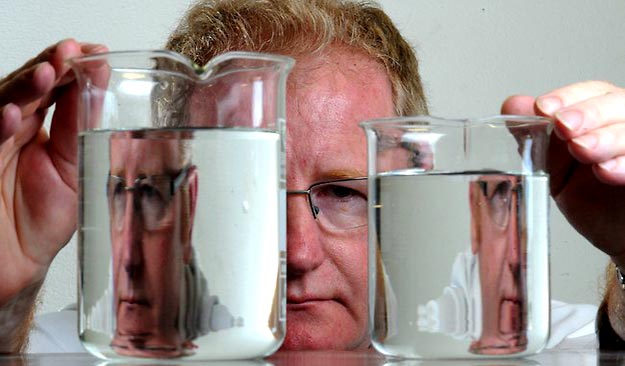There is a lack of evidence regarding the effectiveness of technologies used to reduce arsenic contamination finds research in BioMed Central’s open access journal Environmental Evidence. More studies assessing the technologies themselves and how they are used in the community are needed to ensure that people have access to safe, clean water.
 Arsenic is now recognised to be one of the world’s greatest environmental hazards, threatening the lives of several hundred million people. Naturally occurring arsenic leaches into water from surrounding rocks and once in the water supply it is both toxic and carcinogenic to anyone drinking it. It is colourless and odourless and consequently people use it instead of more obviously polluted surface water. Natural arsenic pollution affects 21 countries across the world sometimes reaching a concentration more than ten times the WHO guidelines.
Arsenic is now recognised to be one of the world’s greatest environmental hazards, threatening the lives of several hundred million people. Naturally occurring arsenic leaches into water from surrounding rocks and once in the water supply it is both toxic and carcinogenic to anyone drinking it. It is colourless and odourless and consequently people use it instead of more obviously polluted surface water. Natural arsenic pollution affects 21 countries across the world sometimes reaching a concentration more than ten times the WHO guidelines.
There are several methods available for removing arsenic from contaminated water. Researchers from the University of Exeter Medical School (supported by the National Institute for Health Research Collaboration for Leadership in Applied Health Research and Care in the South West Peninsula (NIHR PenCLAHRC), compared 8 different technologies all of which claim to make drinking water safe. They found that most of the studies reviewed were found to be of poor quality and missing data and that only two technologies showed good evidence of effectiveness.
Lack of data was not the only problem with these technologies. Dr Mark Pearson, who led this study, explained, “Combining the qualitative results it became clear that a major problem was the reluctance of the user. Many people in affected regions, even if aware of the problems with arsenic, believe that they will not be affected, or find the technologies too difficult to use and maintain.”
Dr Pearson continued, “It is imperative that more data is made available for decision makers to choose the most appropriate and effective technology for ensuring clean safe water. For any technology to be successful it also needs to take into account how acceptable the technology is to users, how people perceive the problem, the role of women in society and how to instil a sense of ownership into the community.”
Source: http://www.sciencedaily.com
Dear User/Visitor! Please, answer on our questions: tick off one of the positions – your answer will make us able to improve our site and make it more interesting and useful!

